|
| A |
 | Usage: a
double compartment anglicana 'a' used throughout. The scribe is extremely cinsistent although the size of the upper and lower compartments does vary slightly in size at times. |  | Usage: passus
red glosses within the text box in the hand of the scribe.He does not adopt any kind of display script. |
 | Usage: And
there is only one version of upper case 'A', formed as seen in this example. The shape hardly varies. | 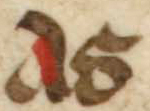 | Usage: As |
|
| D |
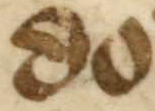 | Usage: dowel
neat and regular formation of looped 'd'. |  | Usage: dobet
in some places, the loop is not quite completed. |
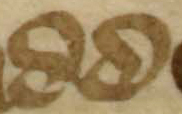 | Usage: hadde | 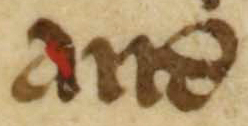 | Usage: And |
|
| G |
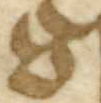 | Usage: greuen
double compartment 'g' is used throughout. The stroke from the right of the upper comnpartment is a scooped stroke combining with what in other hands appears as a horizontal extension. The lower compartment is often triangular in shape. | 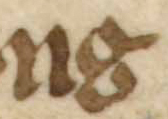 | Usage: IPassyng |
 | Usage: gan
sometimes the scribe does not complete the lower compartment, leaving a small space between upper and lower on the right side. A hairline stroke links the head. | 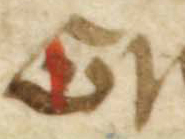 | Usage: Gretli
the upper case graph at the beginning of a line. |
|
| H |
 | Usage: han
notched head at the top of the stem thick stroke for shoulder to limb and fine tail-stroke angling clockwise sharply beneath the body of the graph. | 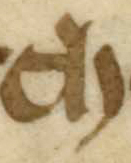 | Usage: recche |
 | Usage: Hic
from the Latin incipit and to reinforce the presentation of upper case 'H' also seen in version 4. | 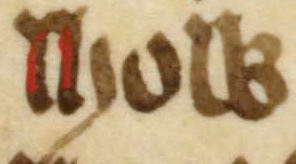 | Usage: How
a strange upper case graph for 'H'. |
|
| R |
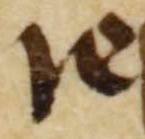 | Usage: restitue
long 'r' is used in all positions except where 'z'-shaped 'r' is used after 'o' and several round-bodied graphs. |  | Usage: after
long 'r' in final position with upturn from the shoulder. |
 | Usage: laborers
long 'r' and 'z'-shaped 'r' in this example. |  | Usage: frere |
|
| S |
 | Usage: seide
long 's' is used in initial and medial positions. |  | Usage: was
flat-headed greek sigma 's' for the final position. |
 | Usage: penaunceles |  | Usage: Selde
upper case 'S' tipped with red ink at the beginning of a line. |
|
| W |
 | Usage: wiþ
'w' has split heads to the arms and a 'B'-shaped element to the right. |  | Usage: þow
'w' in final position. |
 | Usage: Lewede |  | Usage: dowel
'w' in the red ink of the gloss. |
|
| Y |
 | Usage: wissyng
the left arm of 'y' drops vertically to the lower level of surrounding graphs. The right arm begins at the same height, angles away with a thick stroke then turns acutely and a fine stroke joins the lower end of the left arm before curving counter-clockwise, again with a thick stroke. |  | Usage: prouyncial
'y' is always dotted. |
 | Usage: pecunyous
a 'y' with a straight tail. |  | Usage: eyne |
|
| Thorn and Yogh |
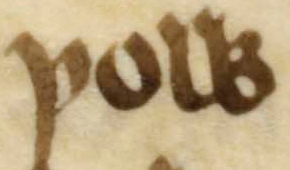 | Usage: þow
thorn is used throughout for 'th'. |  | Usage: welþe |
 | Usage: ȝif
yogh is used occasionally. It may or may not be used as equivalent to the 'gh' sound. it is mainly used to represent 'y'. |  | Usage: eyȝe |






































